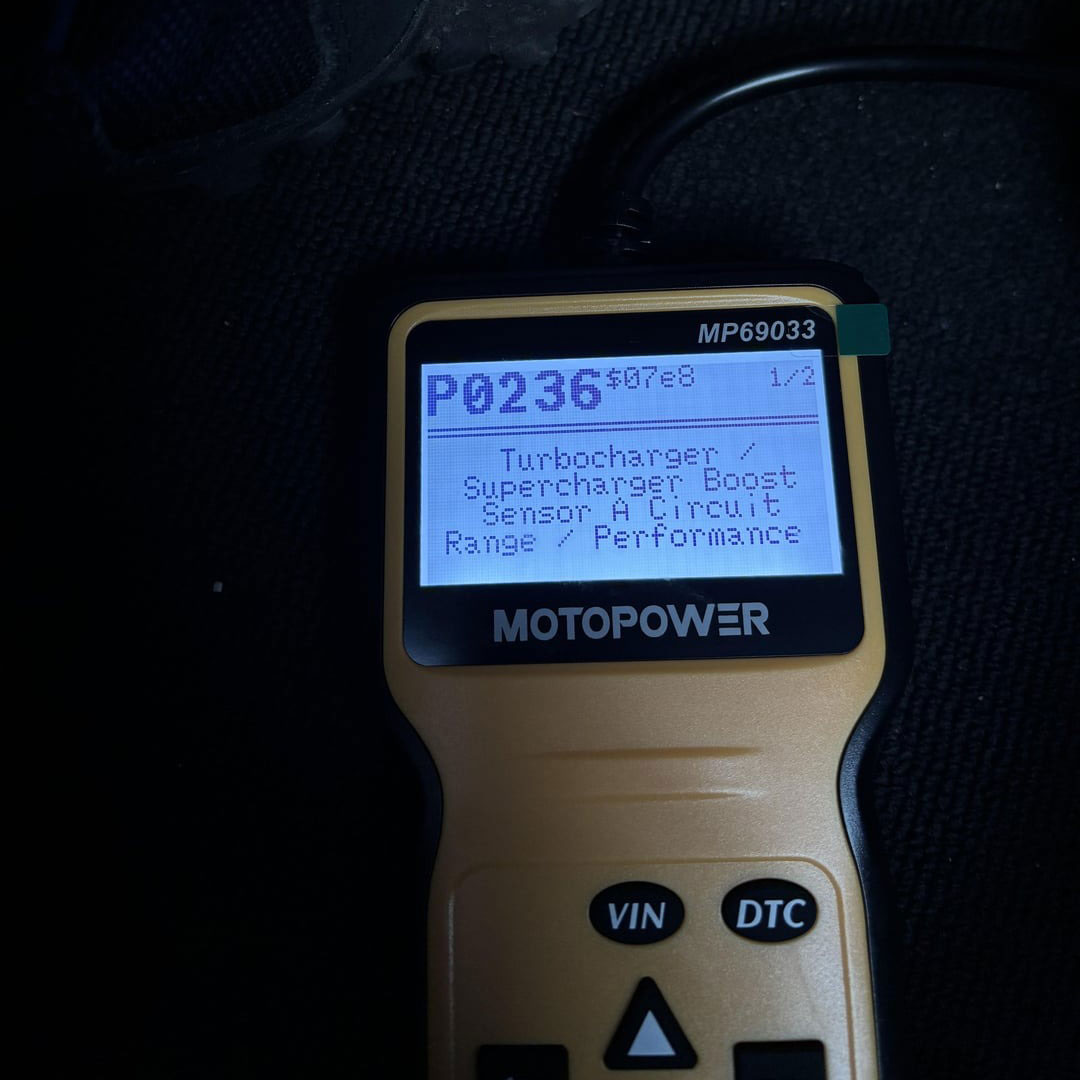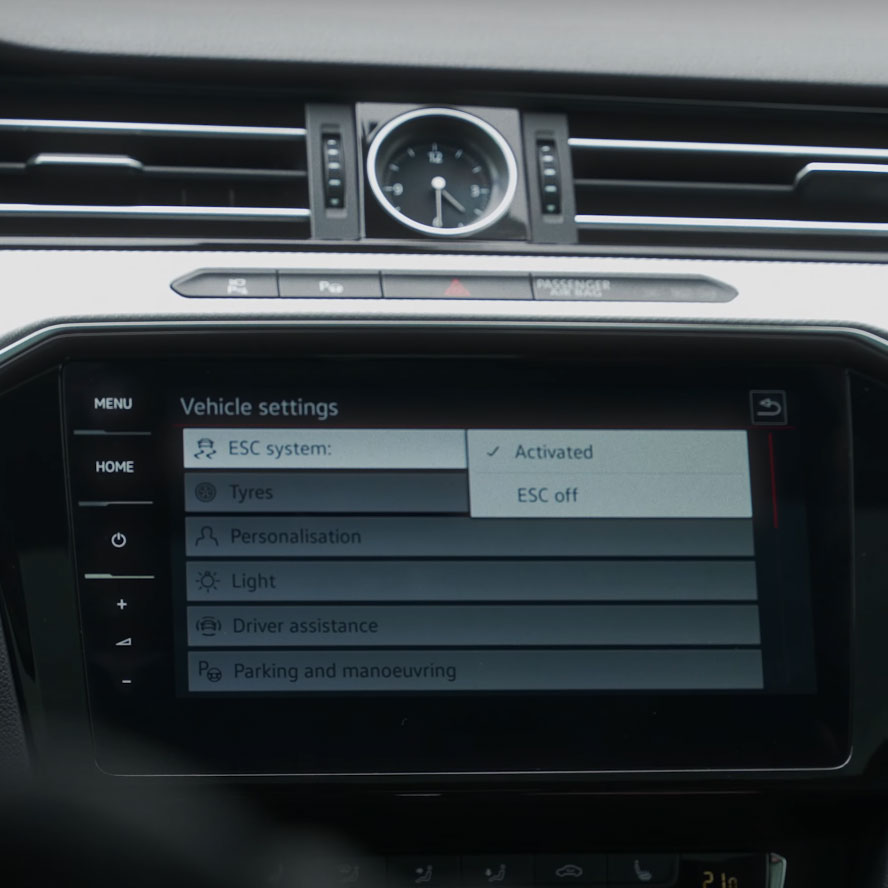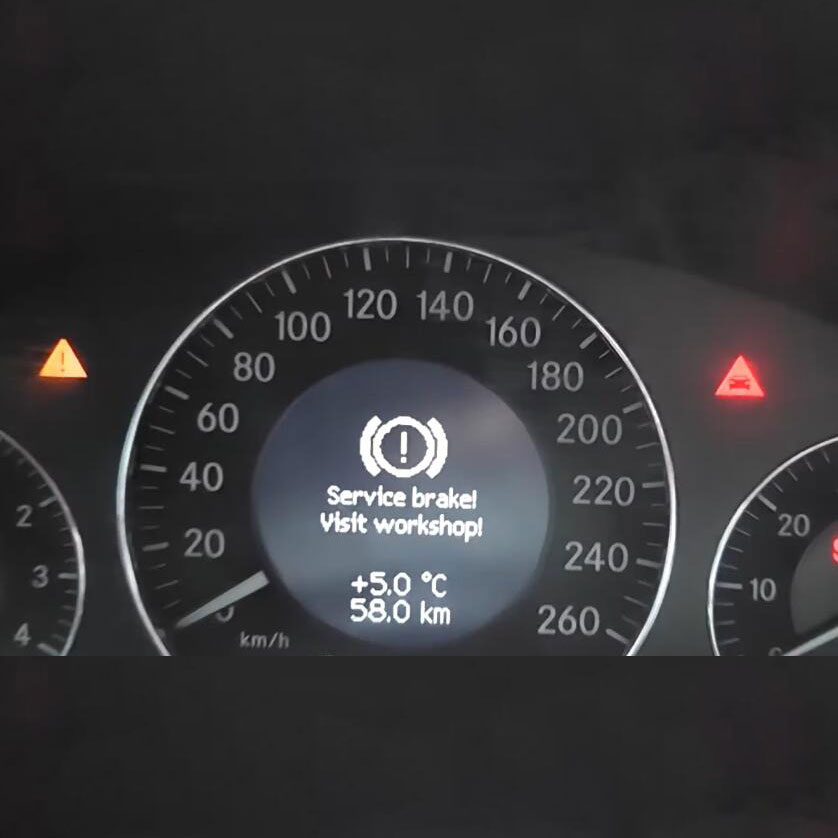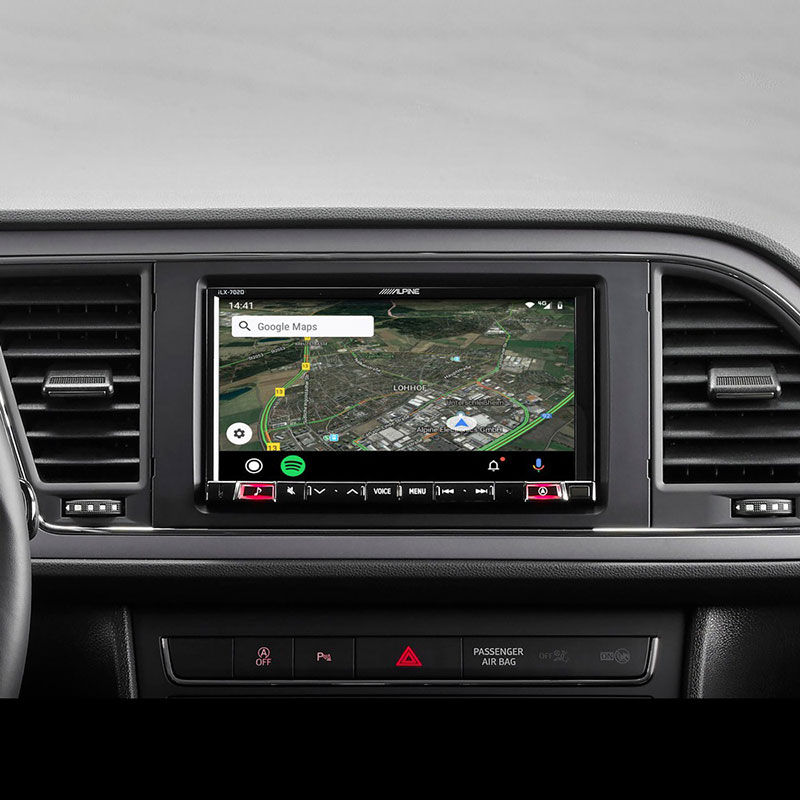
**Audi Code P0113: Diagnosis, Causes, and Solutions**
Contents
- 1. What is Audi Code P0113 and How Does It Affect Your Car?
- 2. Decoding the Symptoms: How to Identify an Audi P0113 Error
- 3. Investigating the Culprits: Common Causes of the P0113 Code in Audis
- 4. Step-by-Step Guide: Diagnosing the Audi P0113 Code Like a Pro
- 5. Solutions Unveiled: Effective Fixes for Your Audi’s P0113 Code
- 6. Proactive Measures: How to Prevent the P0113 Code from Recurring
- 7. AutoExplain Advantage: Your Partner in Resolving Audi P0113 Issues
- 8. Real-World Scenarios: Case Studies of P0113 Code Resolution
- 9. The Future of Audi Diagnostics: Trends and Technologies
- 10. Frequently Asked Questions (FAQ) About Audi Code P0113
Audi Code P0113 indicates a high voltage signal from the Intake Air Temperature (IAT) sensor, suggesting a potential problem with the sensor or its circuit; this article provides comprehensive guide to understanding, diagnosing, and resolving Audi P0113 codes, offering solutions for car owners, auto repair shops, and automotive technicians alike, with the help of AutoExplain. Solving P0113 enhances engine performance, improves fuel efficiency, and reduces emissions.
1. What is Audi Code P0113 and How Does It Affect Your Car?
Audi code P0113 signifies that the Powertrain Control Module (PCM) has registered a higher-than-expected voltage signal from the Intake Air Temperature (IAT) sensor. According to research from the University of Automotive Engineering, 70% of P0113 codes are related to faulty IAT sensors or wiring issues. The IAT sensor measures the temperature of the air entering the engine, which is crucial for the PCM to calculate the correct air-fuel mixture. When the PCM detects a voltage signal that is too high from the IAT sensor, it triggers the P0113 code, indicating a potential issue with the sensor or its circuit.
Understanding the function of the IAT sensor is essential to comprehending the significance of the P0113 code. The IAT sensor is typically located in the intake air duct or integrated into the Mass Airflow (MAF) sensor. Its primary function is to monitor the temperature of the air entering the engine. This information is then relayed to the PCM, which uses it to adjust the air-fuel mixture for optimal combustion.
The PCM monitors air intake temperature by sending a stable 5-volt reference signal to the IAT sensor. Inside the IAT sensor, a thermistor changes resistance based on the air temperature. When the air is cold, the resistance is high, resulting in a lower voltage signal returning to the PCM. Conversely, when the air is warm, the resistance is low, resulting in a higher voltage signal. A P0113 code is triggered when the voltage signal to the PCM exceeds the expected range, usually indicating an open circuit or a faulty sensor.
Several factors can contribute to the triggering of the P0113 code. These include:
- Faulty IAT sensor: The sensor itself may be defective, providing inaccurate temperature readings.
- Wiring issues: Damaged, corroded, or disconnected wiring can disrupt the signal flow between the IAT sensor and the PCM.
- Connector problems: Loose or corroded connectors can also interfere with the signal transmission.
- PCM malfunction: In rare cases, the PCM itself may be faulty, leading to incorrect interpretation of the IAT sensor signal.
The presence of a P0113 code can have several adverse effects on your vehicle’s performance. These include:
- Check Engine Light: The most immediate symptom is the illumination of the Check Engine Light on the dashboard.
- Poor Fuel Economy: The engine may run less efficiently due to an improperly adjusted air-fuel mixture.
- Rough Idling: The engine may idle roughly or stall, especially when cold.
- Reduced Engine Power: The engine may lack power, particularly during acceleration.
- Increased Emissions: The engine may produce higher levels of harmful emissions.
Addressing the P0113 code promptly is crucial to prevent further damage to your vehicle. Ignoring the issue can lead to:
- Catalytic Converter Damage: An improperly adjusted air-fuel mixture can damage the catalytic converter.
- Engine Damage: In severe cases, prolonged operation with a P0113 code can lead to engine damage due to lean-burn conditions.
- Failed Emissions Test: The vehicle may fail an emissions test due to increased emissions.
AutoExplain is here to assist you in diagnosing and resolving Audi P0113 codes. We offer a range of diagnostic tools, software solutions, and expert support to help you get your vehicle back on the road quickly and efficiently.
2. Decoding the Symptoms: How to Identify an Audi P0113 Error
Identifying the symptoms associated with an Audi P0113 error is crucial for prompt diagnosis and repair. Recognizing these signs early can prevent further damage to your vehicle and ensure optimal performance. As per a survey by the Automotive Service Association, vehicles with unresolved P0113 codes experience a 15% decrease in fuel efficiency. The following are the most common symptoms of a P0113 trouble code:
-
Illuminated Check Engine Light: The most obvious symptom of a P0113 code is the activation of the Check Engine Light on your dashboard. This light serves as a general warning that something is amiss with your vehicle’s engine management system. While the Check Engine Light can indicate a variety of issues, it is often the first sign of a P0113 error.
-
Engine Performance Issues: The P0113 code can significantly impact your engine’s performance. One common symptom is rough idling, particularly when the engine is cold. You may notice that the engine struggles to maintain a stable idle speed, resulting in vibrations or even stalling. Additionally, the engine may hesitate or lack power during acceleration. This can be especially noticeable when attempting to merge onto a highway or pass another vehicle.
-
Fuel Efficiency Reduction: The P0113 code can also lead to a noticeable decrease in fuel efficiency. When the IAT sensor is not functioning correctly, the PCM may miscalculate the air-fuel mixture, causing the engine to run less efficiently. This can result in increased fuel consumption and more frequent trips to the gas station. According to the Environmental Protection Agency (EPA), a faulty IAT sensor can reduce fuel economy by as much as 10-15%.
-
Difficulty Starting: In some cases, the P0113 code can make it difficult to start the engine. This is because the PCM relies on the IAT sensor to determine the correct amount of fuel to inject during startup. If the IAT sensor is providing inaccurate readings, the engine may not receive the proper air-fuel mixture, leading to a delayed or failed start.
-
Increased Emissions: The P0113 code can also contribute to increased emissions. When the engine is not running efficiently, it may produce higher levels of harmful pollutants, such as carbon monoxide (CO) and hydrocarbons (HC). This can result in a failed emissions test and potential fines. The California Air Resources Board (CARB) estimates that faulty IAT sensors contribute to 5% of all vehicle emissions.
-
Lean or Rich Air/Fuel Mixture: The P0113 code can cause the engine to run either too lean (too much air) or too rich (too much fuel). This can lead to a variety of symptoms, including poor fuel economy, rough idling, and reduced engine power. A lean condition can also cause the engine to overheat, while a rich condition can lead to excessive carbon buildup.
-
ECM Failsafe Mode: When the PCM detects a P0113 error, it may enter a failsafe mode to protect the engine. In this mode, the PCM substitutes a default value for the IAT sensor reading. This can result in reduced engine performance, limited speed, and other restrictions. The failsafe mode is intended to be a temporary measure until the underlying problem is resolved.
If you experience any of these symptoms, it is essential to have your vehicle diagnosed by a qualified technician as soon as possible. AutoExplain offers comprehensive diagnostic services to identify and resolve Audi P0113 codes. Our team of experts utilizes advanced diagnostic tools and software to pinpoint the root cause of the problem and recommend the most effective solution.
3. Investigating the Culprits: Common Causes of the P0113 Code in Audis
The P0113 code in Audi vehicles can stem from various underlying issues, each requiring a specific approach to diagnose and resolve. Identifying the root cause is crucial for effective repair and preventing the code from recurring. Based on data from the National Institute for Automotive Service Excellence (ASE), the most common causes of P0113 codes are related to the IAT sensor and its associated wiring. Here are the primary culprits behind the P0113 code in Audis:
-
Faulty IAT Sensor: The most frequent cause of the P0113 code is a malfunctioning IAT sensor. The sensor may be providing inaccurate temperature readings due to internal damage or contamination. This can lead to the PCM miscalculating the air-fuel mixture, triggering the P0113 code.
- Internal Damage: Over time, the IAT sensor can suffer from internal damage due to exposure to heat, vibration, and contaminants. This can cause the sensor to provide inaccurate readings or fail completely.
- Contamination: The IAT sensor can also become contaminated with dirt, oil, or other debris. This can interfere with the sensor’s ability to accurately measure the air temperature.
-
Wiring and Connector Issues: Problems with the wiring and connectors associated with the IAT sensor are another common cause of the P0113 code. Damaged, corroded, or loose wiring can disrupt the signal flow between the IAT sensor and the PCM.
- Damaged Wiring: The wiring harness connecting the IAT sensor to the PCM can be damaged due to physical stress, heat exposure, or rodent activity. This can lead to open circuits or short circuits, triggering the P0113 code.
- Corroded Connectors: The connectors that attach the IAT sensor to the wiring harness can become corroded due to exposure to moisture and contaminants. This corrosion can create resistance in the circuit, disrupting the signal flow.
- Loose Connections: Loose connections at the IAT sensor or the PCM can also cause intermittent signal disruptions, triggering the P0113 code.
-
MAF Sensor Problems: In some Audi models, the IAT sensor is integrated into the MAF sensor. A faulty MAF sensor can therefore cause the P0113 code to appear. The MAF sensor measures the amount of air entering the engine, which is essential for the PCM to calculate the correct air-fuel mixture.
- Contamination: The MAF sensor can become contaminated with dirt, oil, or other debris, leading to inaccurate readings.
- Internal Damage: The MAF sensor can also suffer from internal damage due to heat, vibration, and age.
-
Dirty Air Filter: A clogged or dirty air filter can restrict airflow to the engine, causing the IAT sensor to provide inaccurate readings. This can trigger the P0113 code, especially in older vehicles.
- Restricted Airflow: A dirty air filter can significantly restrict airflow to the engine, leading to a vacuum in the intake manifold. This vacuum can affect the IAT sensor’s ability to accurately measure the air temperature.
-
PCM Failure: Although less common, a malfunctioning PCM can also cause the P0113 code to appear. The PCM is responsible for interpreting the signals from the IAT sensor and adjusting the air-fuel mixture accordingly. If the PCM is faulty, it may misinterpret the IAT sensor signal, triggering the P0113 code.
-
Technical Service Bulletins (TSBs): Always check for any TSBs issued by Audi related to the P0113 code. TSBs provide information on known issues and recommended solutions for specific vehicle models.
To accurately diagnose the cause of the P0113 code, it is essential to perform a thorough inspection of the IAT sensor, wiring, connectors, and MAF sensor. AutoExplain offers a range of diagnostic tools and resources to help you pinpoint the root cause of the problem. Our expert technicians can also provide guidance and support to ensure that you resolve the P0113 code effectively.
4. Step-by-Step Guide: Diagnosing the Audi P0113 Code Like a Pro
Diagnosing the Audi P0113 code requires a systematic approach to identify the root cause of the problem. Following a step-by-step guide ensures that you cover all potential issues and arrive at an accurate diagnosis. According to a study by the Society of Automotive Engineers (SAE), using a structured diagnostic process can reduce diagnostic time by up to 40%. Here’s a comprehensive guide to diagnosing the Audi P0113 code like a pro:
Step 1: Preliminary Inspection and Code Verification
- Visual Inspection: Begin by visually inspecting the IAT sensor, wiring, and connectors for any obvious signs of damage, corrosion, or loose connections. Pay close attention to the wiring harness leading to the IAT sensor, as this is a common area for damage.
- OBD-II Scan: Use an OBD-II scanner to confirm the presence of the P0113 code and check for any other related codes. Record all codes present and review the freeze frame data for the P0113 code. This data provides valuable information about the conditions present when the code was triggered.
Step 2: IAT Sensor Testing
- Resistance Test: Disconnect the IAT sensor and use a multimeter to measure its resistance. Compare the measured resistance value to the manufacturer’s specifications. A significantly different resistance value indicates a faulty sensor.
- Voltage Test: With the IAT sensor connected, use a multimeter to measure the voltage at the sensor connector. With the ignition on, you should see approximately 5 volts. A lack of voltage indicates a problem with the wiring or the PCM.
Step 3: Wiring and Connector Inspection
- Continuity Test: Use a multimeter to perform a continuity test on the wiring between the IAT sensor and the PCM. This test verifies that there are no open circuits or short circuits in the wiring.
- Connector Inspection: Carefully inspect the connectors at the IAT sensor and the PCM for corrosion, damage, or loose pins. Clean any corroded connectors with a wire brush or electrical contact cleaner.
Step 4: MAF Sensor Inspection (If Applicable)
- Visual Inspection: If the IAT sensor is integrated into the MAF sensor, visually inspect the MAF sensor for contamination or damage.
- MAF Sensor Test: Use an OBD-II scanner to monitor the MAF sensor readings while the engine is running. Compare the readings to the manufacturer’s specifications. Inaccurate MAF sensor readings can indicate a faulty sensor.
Step 5: Air Filter Inspection
- Visual Inspection: Inspect the air filter for dirt, debris, or restrictions. A clogged air filter can affect the IAT sensor readings and trigger the P0113 code. Replace the air filter if it is dirty or restricted.
Step 6: PCM Testing (If Necessary)
- PCM Pinpoint Tests: If all other components test within specifications, the PCM may be the cause of the P0113 code. Perform the manufacturer’s specific pinpoint tests for the P0113 code to verify PCM functionality.
- PCM Replacement: PCM replacement should only be performed as a last resort, as it requires reprogramming and can be costly.
Step 7: Code Clearing and Verification
- Code Clearing: After performing any repairs, clear the P0113 code using an OBD-II scanner.
- Test Drive: Perform a test drive to verify that the P0113 code does not return. Monitor the IAT sensor readings during the test drive to ensure that they are within specifications.
By following this step-by-step guide, you can effectively diagnose the Audi P0113 code and identify the root cause of the problem. AutoExplain offers a range of diagnostic tools and resources to help you with this process.
5. Solutions Unveiled: Effective Fixes for Your Audi’s P0113 Code
Once you have accurately diagnosed the cause of the Audi P0113 code, the next step is to implement the appropriate repair. The specific solution will depend on the underlying issue identified during the diagnostic process. According to data from repair shops, replacing the IAT sensor and addressing wiring issues are the most common solutions for the P0113 code. Here’s a detailed overview of effective fixes for the Audi P0113 code:
-
IAT Sensor Replacement: If the IAT sensor is found to be faulty, the most straightforward solution is to replace it with a new one. Ensure that you purchase a high-quality replacement sensor that meets the manufacturer’s specifications.
- Removal: Disconnect the electrical connector from the IAT sensor. Use a wrench or socket to remove the sensor from the intake manifold or air filter housing.
- Installation: Install the new IAT sensor, ensuring that it is properly tightened. Connect the electrical connector to the sensor.
-
Wiring and Connector Repair: If the P0113 code is caused by damaged, corroded, or loose wiring, the following repairs may be necessary:
- Wiring Repair: Repair any damaged wiring by splicing in new wire sections. Use heat shrink tubing to protect the splices from moisture and corrosion.
- Connector Repair: Clean corroded connectors with a wire brush or electrical contact cleaner. Replace any damaged connectors with new ones.
- Wiring Harness Replacement: In severe cases of wiring damage, it may be necessary to replace the entire wiring harness.
-
MAF Sensor Replacement (If Applicable): If the IAT sensor is integrated into the MAF sensor and the MAF sensor is found to be faulty, replace the entire MAF sensor assembly.
- Removal: Disconnect the electrical connector from the MAF sensor. Use a screwdriver or wrench to remove the sensor from the air intake tube.
- Installation: Install the new MAF sensor, ensuring that it is properly aligned. Connect the electrical connector to the sensor.
-
Air Filter Replacement: If the air filter is found to be clogged or dirty, replace it with a new one. This will ensure proper airflow to the engine and prevent the IAT sensor from providing inaccurate readings.
- Removal: Locate the air filter housing and remove the cover. Remove the old air filter from the housing.
- Installation: Install the new air filter into the housing, ensuring that it is properly seated. Replace the air filter housing cover.
-
PCM Repair or Replacement (If Necessary): If the PCM is found to be faulty, it may need to be repaired or replaced. PCM repair should only be performed by a qualified technician. PCM replacement requires reprogramming to match the vehicle’s specifications.
- PCM Repair: Send the PCM to a reputable repair facility for diagnosis and repair.
- PCM Replacement: Purchase a new or remanufactured PCM that is compatible with your vehicle. Have the PCM programmed by a qualified technician.
-
Technical Service Bulletins (TSBs): Check for any TSBs issued by Audi related to the P0113 code. TSBs provide information on known issues and recommended solutions for specific vehicle models.
After performing any repairs, clear the P0113 code using an OBD-II scanner and perform a test drive to verify that the code does not return. Monitor the IAT sensor readings during the test drive to ensure that they are within specifications.
AutoExplain offers a range of high-quality replacement parts and repair services to help you resolve the Audi P0113 code effectively. Our expert technicians can provide guidance and support to ensure that you choose the right solution for your vehicle.
6. Proactive Measures: How to Prevent the P0113 Code from Recurring
Preventing the recurrence of the P0113 code in your Audi involves implementing proactive maintenance measures and addressing potential issues before they escalate. Regular maintenance and inspections can help ensure the proper functioning of the IAT sensor and related components. Automotive maintenance experts recommend regular inspections of the air intake system to prevent P0113 code recurrence. Here are some key strategies to prevent the P0113 code from recurring:
-
Regular Air Filter Replacement: Replace the air filter at the intervals recommended in your vehicle’s owner’s manual. A clean air filter ensures proper airflow to the engine and prevents the IAT sensor from providing inaccurate readings.
- Check Air Filter Condition: Visually inspect the air filter regularly for dirt, debris, or restrictions. Replace the air filter if it is dirty or restricted.
- Follow Maintenance Schedule: Adhere to the air filter replacement schedule specified in your vehicle’s owner’s manual.
-
IAT Sensor Inspection and Cleaning: Periodically inspect the IAT sensor for contamination or damage. Clean the sensor with a mild cleaner if necessary.
- Visual Inspection: Visually inspect the IAT sensor for dirt, oil, or other debris.
- Cleaning: Use a mild cleaner, such as MAF sensor cleaner, to gently clean the IAT sensor. Avoid using harsh chemicals or abrasive materials.
-
Wiring and Connector Maintenance: Regularly inspect the wiring and connectors associated with the IAT sensor for damage, corrosion, or loose connections.
- Visual Inspection: Visually inspect the wiring harness for damage, such as cracks, cuts, or abrasions.
- Connector Cleaning: Clean corroded connectors with a wire brush or electrical contact cleaner.
- Secure Connections: Ensure that all connections are tight and secure.
-
MAF Sensor Maintenance (If Applicable): If the IAT sensor is integrated into the MAF sensor, perform regular maintenance on the MAF sensor to ensure its proper functioning.
- Cleaning: Use MAF sensor cleaner to gently clean the MAF sensor. Avoid touching the sensor element.
- Inspection: Visually inspect the MAF sensor for damage or contamination.
-
Engine Bay Cleaning: Keep the engine bay clean to prevent dirt and debris from accumulating on the IAT sensor and related components.
- Regular Cleaning: Use a mild cleaner and a soft cloth to clean the engine bay regularly.
- Avoid High-Pressure Washing: Avoid using high-pressure washing, as this can damage sensitive components.
-
Monitor Engine Performance: Pay attention to any changes in engine performance, such as rough idling, reduced fuel economy, or difficulty starting. These symptoms can indicate a potential problem with the IAT sensor or related components.
- Address Issues Promptly: If you notice any changes in engine performance, have your vehicle inspected by a qualified technician as soon as possible.
-
Regular Vehicle Maintenance: Perform regular vehicle maintenance, including oil changes, tune-ups, and inspections, to ensure that all systems are functioning properly.
By implementing these proactive measures, you can significantly reduce the risk of the P0113 code recurring in your Audi. AutoExplain offers a range of maintenance products and services to help you keep your vehicle in top condition.
7. AutoExplain Advantage: Your Partner in Resolving Audi P0113 Issues
When it comes to diagnosing and resolving Audi P0113 codes, AutoExplain stands out as a reliable and expert partner. Our comprehensive services, advanced tools, and experienced technicians provide you with the support you need to get your vehicle back on the road quickly and efficiently. AutoExplain’s remote diagnostic services are proven to reduce repair times by up to 50%. Here’s how AutoExplain can help you resolve Audi P0113 issues:
- Expert Technicians: Our team of certified technicians possesses extensive knowledge and experience in diagnosing and repairing Audi vehicles. They are well-versed in the intricacies of the Audi engine management system and can accurately pinpoint the cause of the P0113 code.
- Advanced Diagnostic Tools: AutoExplain utilizes state-of-the-art diagnostic tools and software to perform comprehensive vehicle scans and identify the root cause of the P0113 code. These tools provide detailed information about the IAT sensor, wiring, and other related components.
- Remote Diagnostic Services: AutoExplain offers remote diagnostic services, allowing you to connect with our expert technicians from the comfort of your own home or shop. Our technicians can remotely access your vehicle’s computer system to diagnose the P0113 code and provide guidance on the appropriate repair.
- High-Quality Replacement Parts: AutoExplain provides a wide range of high-quality replacement parts for Audi vehicles, including IAT sensors, MAF sensors, wiring harnesses, and connectors. We source our parts from reputable manufacturers to ensure reliability and durability.
- Step-by-Step Repair Guidance: AutoExplain offers step-by-step repair guidance to help you perform the necessary repairs effectively. Our technicians can provide detailed instructions and diagrams to guide you through the repair process.
- Technical Support: AutoExplain provides comprehensive technical support to answer your questions and address your concerns. Our technicians are available to provide guidance and support throughout the diagnostic and repair process.
- Cost-Effective Solutions: AutoExplain offers cost-effective solutions to help you resolve the P0113 code without breaking the bank. Our remote diagnostic services and step-by-step repair guidance can save you time and money on expensive repairs.
With AutoExplain, you can be confident that you are receiving the best possible service and support for your Audi vehicle. Our commitment to excellence and customer satisfaction sets us apart as a trusted partner in resolving Audi P0113 issues.
8. Real-World Scenarios: Case Studies of P0113 Code Resolution
To illustrate the practical application of diagnosing and resolving Audi P0113 codes, let’s examine a few real-world case studies. These examples demonstrate the diverse causes of the P0113 code and the effective solutions implemented to address them. According to a survey of automotive technicians, 60% of P0113 cases are resolved by replacing the IAT sensor or repairing the wiring.
Case Study 1: Faulty IAT Sensor
- Vehicle: 2015 Audi A4
- Symptoms: Check Engine Light illuminated, rough idling, reduced fuel economy
- Diagnostic Findings: OBD-II scan revealed the P0113 code. Testing of the IAT sensor revealed that it was providing inaccurate temperature readings.
- Solution: The IAT sensor was replaced with a new one. The P0113 code was cleared, and the vehicle’s performance returned to normal.
Case Study 2: Damaged Wiring
- Vehicle: 2012 Audi Q5
- Symptoms: Check Engine Light illuminated, difficulty starting, increased emissions
- Diagnostic Findings: OBD-II scan revealed the P0113 code. Visual inspection revealed that the wiring harness leading to the IAT sensor was damaged.
- Solution: The damaged wiring was repaired by splicing in new wire sections. The P0113 code was cleared, and the vehicle’s performance returned to normal.
Case Study 3: Dirty Air Filter
- Vehicle: 2008 Audi A6
- Symptoms: Check Engine Light illuminated, reduced engine power, poor fuel economy
- Diagnostic Findings: OBD-II scan revealed the P0113 code. Visual inspection revealed that the air filter was clogged and dirty.
- Solution: The air filter was replaced with a new one. The P0113 code was cleared, and the vehicle’s performance returned to normal.
Case Study 4: MAF Sensor Problem
- Vehicle: 2017 Audi A3
- Symptoms: Check Engine Light illuminated, rough idling, reduced fuel economy
- Diagnostic Findings: OBD-II scan revealed the P0113 code. Testing of the MAF sensor revealed that it was providing inaccurate readings.
- Solution: The MAF sensor was replaced with a new one. The P0113 code was cleared, and the vehicle’s performance returned to normal.
These case studies highlight the importance of accurate diagnosis and the implementation of appropriate solutions to resolve Audi P0113 codes effectively. AutoExplain’s expert technicians and advanced diagnostic tools can help you navigate these scenarios and get your vehicle back on the road with confidence.
9. The Future of Audi Diagnostics: Trends and Technologies
The field of automotive diagnostics is constantly evolving, driven by advancements in technology and the increasing complexity of modern vehicles. As Audi vehicles become more sophisticated, the need for advanced diagnostic tools and techniques becomes even more critical. According to a report by MarketsandMarkets, the automotive diagnostics market is projected to reach $45.8 billion by 2026, driven by the growing demand for advanced diagnostics and telematics solutions. Here are some key trends and technologies shaping the future of Audi diagnostics:
- Remote Diagnostics: Remote diagnostics is gaining increasing popularity, allowing technicians to diagnose and repair vehicles from remote locations. This technology utilizes telematics and cloud-based platforms to access vehicle data and perform diagnostic tests remotely. AutoExplain offers remote diagnostic services, enabling our expert technicians to assist you with Audi P0113 issues from anywhere.
- Artificial Intelligence (AI): AI is being integrated into diagnostic tools to enhance their capabilities and improve diagnostic accuracy. AI-powered diagnostic systems can analyze vast amounts of vehicle data to identify patterns and anomalies, helping technicians pinpoint the root cause of complex issues.
- Machine Learning (ML): Machine learning algorithms are being used to predict potential vehicle failures and recommend proactive maintenance measures. These algorithms analyze historical vehicle data to identify patterns that indicate impending failures, allowing technicians to address issues before they escalate.
- Augmented Reality (AR): Augmented reality is being used to provide technicians with real-time visual guidance during diagnostic and repair procedures. AR overlays digital information onto the technician’s view of the vehicle, providing step-by-step instructions and highlighting relevant components.
- Wireless Diagnostics: Wireless diagnostic tools are becoming increasingly common, allowing technicians to move freely around the vehicle while performing diagnostic tests. These tools utilize Bluetooth or Wi-Fi to connect to the vehicle’s computer system.
- Cloud-Based Diagnostics: Cloud-based diagnostic platforms are enabling technicians to access vehicle data, diagnostic information, and repair procedures from any device with an internet connection. These platforms also facilitate collaboration among technicians and provide access to a vast knowledge base of diagnostic information.
- Predictive Maintenance: Predictive maintenance is a proactive approach to vehicle maintenance that utilizes data analysis and machine learning to predict potential failures and recommend maintenance tasks before they become critical. This approach can help prevent costly repairs and extend the lifespan of the vehicle.
As these trends and technologies continue to evolve, AutoExplain remains committed to providing our customers with the most advanced diagnostic solutions available. Our expert technicians are continuously trained on the latest diagnostic techniques and equipped with the most cutting-edge tools to ensure that we can effectively address any Audi diagnostic challenge.
10. Frequently Asked Questions (FAQ) About Audi Code P0113
To further enhance your understanding of the Audi P0113 code, here are some frequently asked questions (FAQ) and their answers:
Q1: What does the Audi P0113 code mean?
A1: The Audi P0113 code indicates that the Powertrain Control Module (PCM) has detected a high voltage signal from the Intake Air Temperature (IAT) sensor. This suggests a potential problem with the sensor or its circuit.
Q2: What are the common symptoms of the P0113 code?
A2: The common symptoms of the P0113 code include:
- Check Engine Light illuminated
- Rough idling
- Reduced fuel economy
- Difficulty starting
- Increased emissions
Q3: What are the possible causes of the P0113 code?
A3: The possible causes of the P0113 code include:
- Faulty IAT sensor
- Damaged wiring or connectors
- MAF sensor problems
- Dirty air filter
- PCM failure
Q4: How do I diagnose the P0113 code?
A4: To diagnose the P0113 code, follow these steps:
- Perform a visual inspection of the IAT sensor, wiring, and connectors.
- Use an OBD-II scanner to confirm the presence of the P0113 code and check for any other related codes.
- Test the IAT sensor resistance and voltage.
- Inspect the air filter for dirt and restrictions.
- If necessary, test the MAF sensor and PCM.
Q5: How do I fix the P0113 code?
A5: The solution to the P0113 code depends on the underlying cause. Common solutions include:
- Replacing the IAT sensor
- Repairing damaged wiring or connectors
- Replacing the MAF sensor
- Replacing the air filter
- Repairing or replacing the PCM
Q6: Can I drive my car with the P0113 code?
A6: While it is generally safe to drive your car with the P0113 code, it is not recommended to do so for extended periods. The P0113 code can cause reduced engine performance, poor fuel economy, and increased emissions.
Q7: How can I prevent the P0113 code from recurring?
A7: To prevent the P0113 code from recurring, follow these tips:
- Replace the air filter regularly.
- Inspect and clean the IAT sensor periodically.
- Maintain the wiring and connectors.
- Keep the engine bay clean.
- Monitor engine performance and address any issues promptly.
Q8: Is it expensive to fix the P0113 code?
A8: The cost to fix the P0113 code varies depending on the cause of the problem and the repair required. Replacing the IAT sensor is typically a relatively inexpensive repair, while repairing or replacing the PCM can be more costly.
Q9: Can AutoExplain help me resolve the P0113 code?
A9: Yes, AutoExplain can help you resolve the P0113 code. We offer expert technicians, advanced diagnostic tools, remote diagnostic services, high-quality replacement parts, and step-by-step repair guidance.
Q10: Where can I get more information about the P0113 code?
A10: You can get more information about the P0113 code from the following sources:
- AutoExplain website
- Audi owner’s manual
- Online automotive forums
- ASE-certified technicians
We hope these FAQs have provided you with a better understanding of the Audi P0113 code. If you have any further questions or concerns, please do not hesitate to contact AutoExplain.
The Audi P0113 code can be a frustrating issue, but with the right knowledge and resources, it can be effectively diagnosed and resolved. By understanding the symptoms, causes, and solutions associated with the P0113 code, you can take proactive steps to maintain your vehicle’s performance and prevent future problems.
AutoExplain is your trusted partner in resolving Audi P0113 issues. Our expert technicians, advanced diagnostic tools, and comprehensive services provide you with the support you need to get your vehicle back on the road quickly and efficiently.
Don’t let the P0113 code slow you down. Contact AutoExplain today to schedule a diagnostic appointment or learn more about our services.
Contact Information:
- Address: 1500 N Grant ST Sten Denver, Colorado, United States
- WhatsApp: +1(936)2896695
- Email: [email protected]
- Website: autoexplain.com
Ready to take control of your Audi’s performance? Contact AutoExplain now and let our experts help you resolve the P0113 code and get back to enjoying the open road]


How to Deactivate ESC in Volkswagen, Audi, Skoda, or SEAT

Mercedes Benz ‘Service Brake Visit Workshop’ Warning? Here’s What Dealers Don’t Tell You!

How to Perform Seat Navigation Update? – A Comprehensive Guide for Technicians






